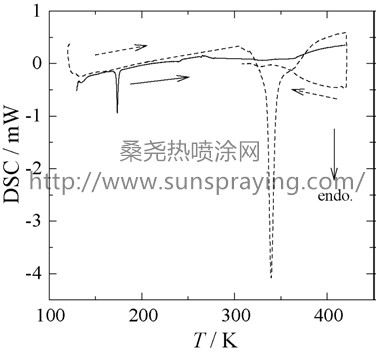A2BX4-family compounds containing isolated tetrahedral BX42− ions form orthorhombic β-K2SO4 (Pnma, Z=4) or monoclinic Sr2GeS4 (P21/m, Z = 2) structures. Many compounds with the β-K2SO4 (Pnma, Z = 4) structure undergo phase transitions to incommensurate (IC) phases at low temperatures. Previously, we reported Cs NMR results in Cs2CdBr4, Cs2HgBr4, Cs2CdI4 and Cs2HgCl4, which take the β-K2SO4 (Pnma, Z = 4) structure, and discussed the lattice dynamics in IC phases and the mechanism of phase transitions concerning with the difference in interionic interactions. On the other hand, all compounds of Sr2GeS4 (P21/m, Z = 2) type have no IC phase. Some of the latter compounds transform from α phase with the Sr2GeS4 structure to α phase with the β-K2SO4 structure, so-called the Tα–β phase transition at a high temperature Tα–β. Below Tα–β, the Sr2GeS4 structure is stable than the β-K2SO4 type, but often the latter can exist as a supercooled metastable state. We have discussed that the difference between Cs2MX4 compounds with Sr2GeS4 and -K2SO4 structures was induced by the partial covalency, which has been qualitatively estimated from values of NMR chemical shift and spin-lattice relaxation time T1.Tl2ZnCl4 is a compound in which Tl+ substitutes for
Rb+ with a close ionic radius in the representative incommensurate compound Rb2ZnCl4. The former compound was reported to show the possibility of an interesting phase transition sequence containing α–β phase transitions into incommensurate and ferroelectric phasesin the low-temperature range. In the present study,Tl2ZnCl4 is investigated by measuring differential thermal analysis (DTA), X-ray powder diffraction, differential scanning calorimetry (DSC) and thermogravimetric (TG) analysis. A large and a small endothermic anomaly at 329 and 365 K, respectively, were detected in the DTA measurement for an as-grown sample on the first heating run up to 400K after cooling from room temperature to 100 K. In this process, the thermal anomaly around 330K disappeared and a new anomaly appeared at 169K on the following heating process in the temperature range of 100–400 K. The small anomaly at 365K remained in this process. These results agree well with recently reported DTA and dielectric results. The phase transition sequence obtained is discussed below. The large anomaly around 330K in the first heating is considered to be a so-called-phase transition as observed
in some of the A2BX4 family substances with the Sr2GeS4 structure. Since the _–_ transition was reported to have strong nature of the first-order transition, the sample is expected to show a supercooled phase transition sequence. The anomalies at 169 and 365K is considered to indicate lock-in and normal-incommensurate phase.

本文由桑尧热喷涂网收集整理。本站文章未经允许不得转载;如欲转载请注明出处,北京桑尧科技开发有限公司网址:http://www.sunspraying.com/
|

